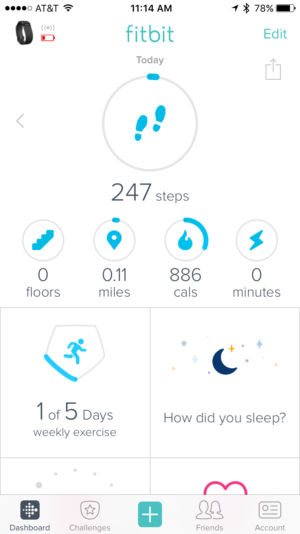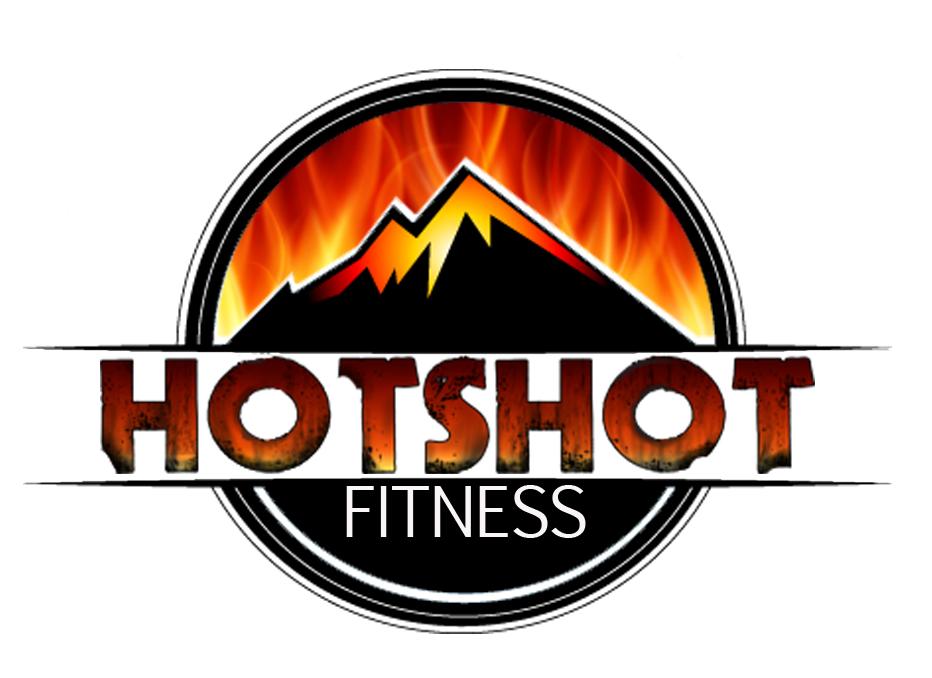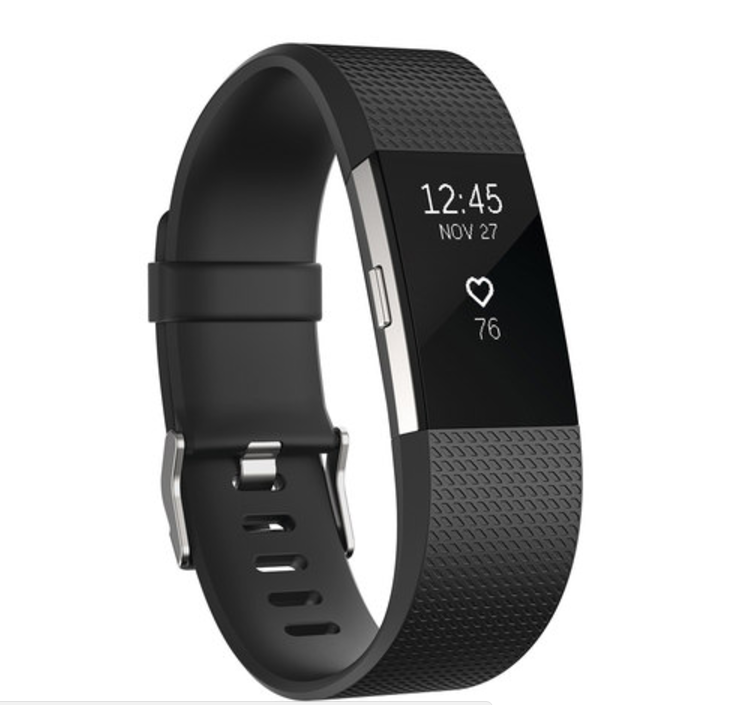 Product: Fitbit Charge 2
Product: Fitbit Charge 2
Maker: Fitbit | www.fitbit.com | San Francisco
Price: $129.88 USD
Buy Now: http://amzn.to/2wsNgKr
Summary:
Fitbit is one of the original pioneers of the now ubiquitous activity trackers. They’re now on their second generation of the Charge device, and it’s a nice improvement from the original Charge HR. At around $130, the Fitbit Charge 2 will track your daily steps, monitor your nightly sleep, and keep tabs on your pulse rate throughout the day. It offers an easy, mindless way to keep track of your daily activity.
Uses:
- Part of your daily off-season carry
- Fitness tracking for training runs and hikes.
- Sleep Tracking
- Not appropriate for the fireline
Pros:
- Sharper Display / More Metrics. One of my biggest gripes about the Fitbit Charge HR was the screen was tough to read in direct sun. Actually, it was almost impossible to even check the time when it was bright out. Fitbit made some improvements. First, they enlarged the screen. Which allows the time to be displayed together with how many steps you have taken for the day. Second, they dialed up the technology a bit, and made the screen brighter. Which improves readability during the middle of the day. But, admittedly, it can still be tough to read when the sun is beating down on you. Additionally, you can customize the display to show multiple stats at a time. Whereas before, you needed to toggle through a couple screens to get your steps and your heart rate, now, because of the larger display, you can display date, time, heart rate and steps all on the home screen. Which is nice, because you can flip your wrist up and get all the info you needed immediately. No tapping or toggling required.
- Mediation / Breathing Feature. I shook my head when I saw this for the first time. Maybe the Lulumon-loving crowd would love this feature, but did I really need to be reminded to be breathe? Did I need a wearable to walk me through this? But, I gave it a try, and honestly, it’s not as worthless as I first thought. It doesn’t hurt to take two minutes every now and again to refocus. Using the vibration feature, it sets a cadence for inhaling and exhaling. Nothing fancy. Just a vibration to remind you when to exhale and when to inhale. I could have used this when I was sitting in a crew haul, staring at an enormous plume of smoke, letting my heart rate rev up to the red line.
- Improved Battery Life. I was pleasantly surprised by how much longer the battery lasted compared to the Fitbit Charge HR. I have gone almost a week between charges. And that’s on the default setting, with all the bells and whistles turned on, like texts, phone, and calendar notifications.
- Sleep Tracking. This is one of the biggest improvements over past models. One of the biggest keys to performance improvement is recovery, and sleep is critical in that effort. The Charge 2 offers great stats on the duration and quality of the sleep you’re getting. It is capable of breaking down how many times you were awake, how long you were in REM sleep, deep sleep, and light sleep. Great for monitoring how well you’re doing in the sleep department.
- IFTT Compatibility. IFTT = If This Then That. In case you’re not familiar, the site exists to make the services that people use more productive by connecting them. Checkout some IFTT ‘recipes‘ you can use with your Fitbit.
- Syncs with other devices in the Fitbit universe like the Fitbit Aria Scale
Cons:
- Touchscreen Responsiveness. At first, I was a bit annoyed by the touch screen’s temperamental moods. Sometimes, it would take multiple taps to activate the screen. Which would annoy me. Then I remembered that I paid $130 for this thing, and I shouldn’t expect this to have the same level of responsiveness as an iPhone screen. You do get what you pay for. Also, the device is supposed to be smart in that it should sense when you motion your arm to look at the device. This feature works about 75% of the time. Which can lead to multiple cases of swinging your wrist up to your face, scowling when the screen doesn’t display, and repeating the gesture. Anyone around you watching this little charade probably will think you’re either mad as a hatter or just irrationally pissed off at the time.
- Weird Notifications. All of a sudden, you will get a notification to get “250 steps in”. To which I would respond by thinking, “Why?” What the hell is this? You don’t tell me what to do, Mr. Fitbit. Oh no, brotha, that’s not how it’s gonna be. You don’t boss me around.” Then I realized I was getting fired up about a whole lot of nothing, and I turned the notification off, and we’ve been cool ever since. However, if you live a sedentary, sloth-like existence (and if you’re reading this, you probably don’t), maybe being reminded to take 250 steps an hour will help you live to see 50.
- No emoji support. If someone sends you an emoji or a picture via text, you can’t use your Fitbit to check it out. You’ll be alerted that you received a text, but it won’t show it. Again…if you want / need that functionality, you’re going to have pay a bit more, and should consider a device like the Apple Watch.
If you’re really considering purchasing a Fitbit Charge 2, but still need some persuading, take a look at some further reviews and feedback, which will hopefully help you make a decision. When purchasing a product like this, you really need to consider how much you will use it, whether it suits your lifestyle and whether there is a better option on the market. That’s entirely down to you!
Pro Tip:
For those of you who never read the instruction manual – which is probably all of you – you might miss Fitbit’s recommendation that you cinch up the strap while exercising. They recommend a looser fit throughout the day, but when it comes time to hike or run, tighten it up a notch or two to improve the accuracy of the readings.
Final Judgement:
Buy
Product: Fitbit Aria Wifi Scale
Maker: Fitbit | www.fitbit.com | San Francisco
Price: $128.47 USD
Buy Now: http://amzn.to/2d4wo0B
Summary:
Some of you might think that launching a product review of a scale during the holiday season, right smack between Thanksgiving and Christmas, is a blunder, but I politely disagree. Now is the BEST time to get a scale, and begin making it part of your daily routine. Tracking your weight is an easy way to monitor your progress, spot trends (both positive and negative), and you can use it to track fluid loss during intense workouts. Here’s the thing, by hopping on the scale now, you know that the results probably aren’t going to get much worse. I’ve been using Fitbit’s Aria Wifi Scale for a couple years now and absolutely love it. It’s simple. It’s easy. It works every time. If you’re in the market for a new scale – I highly recommend this one.
Uses:
- Weighing humans
- Covering floor space
Pros:
- Accurate to a tenth of a pound. A superior alternative to the old fashioned analog scales that littered the bathroom floors of your youth.
- Measures Body Mass Index (BMI). Haven’t compared the BMI values to other tools, however, so can’t speak to the accuracy of its measurement. However, it is precise, and its consistency is useful in identifying trends.
- Allows for multiple users and guests. How does it do this? Magic I’m sure. But it works!
- IFTT Compatibility. IFTT = If This Then That. In case you’re not familiar, the site exists to make the services that people use more productive by connecting them. The Aria Wifi Scale can be programmed to transfer data (weight, date, BMI) to a Google Sheet. Which allows you to track your weight and BMI over time. Interested? Checkout the ‘recipe’ to set it up.
- Reliability. I’ve never had an issue with it dropping the wifi, or crashing it. It just works.
- Syncs with other devices in the Fitbit universe like the Fitbit Charge HR
Cons:
- Delivers the truth. Even if you’re not interested in seeing it.
- No Spotify Compatibility. Doesn’t allow you to play your Spotify playlists during the weigh-in process. You must endure the ten second weighing process in agonizing silence. Ok, I’ll admit, I’m really reaching here.
- It’s a scale. It works. There’s not a lot to complain about here.
Final Judgement:
Buy
Product: Fitbit Charge HR
Maker: Fitbit | www.fitbit.com | San Francisco
Price: $128.79 USD
Buy Now: http://amzn.to/2cuD0d0

NOTE: Before you beat me up on my ABYSMALLY low activity for the day, this screen shot was taken shortly after my son was born. So go easy on a new Dad 😉
Summary:

NOTE: Before you beat me up on my ABYSMALLY low activity for the day, this screen shot was taken shortly after my son was born. So go easy on a new Dad 😉
Wearable fitness trackers have come a long way since Nike debuted the Fuel Band in 2012. That being said, I can still remember ordering one from Target the day that they were released! I was really lucky as I managed to get a discount on my purchase. I have always been a big fan of coupons and saving money, so when my friend told me that he could help me to save more money on my next Target purchase by sending me a promo code I was absolutely delighted. I suppose what I am trying to say is that if you are considering purchasing a fitness tracker anytime soon, I would strongly recommend doing some research online first as there might be a discount code that you can use to get the product that you would like at the best possible price. Anyway, the Fitbit Charge HR represents the current evolution of wearable fitness products. If you’re on a tight budget, focus first on the essentials (good running shoes ((Brooks Adrenaline Trail Shoe is Aces)), decent hiking back pack (GoRuck GR2), gym membership or at home gym equipment like a pull-up bar). But if you have all the basics, and are looking to get a bit more scientific about your workouts, the Fitbit Charge HR is a great product to add to your arsenal.
Personally, I have been using the Fitbit Charge HR for over a year now and can personally attest to the benefits that it has brought to my training. With just the click of a button, you can quickly toggle through current time, total daily steps, current heart rate, total daily mileage, calories burned, and total floors climbed. And if you hold the button down twice, you can track specific workouts. Which will generate workout specific data (average heart rate, total distance, total time, etc.) I really like to use this feature for hiking, especially if I’m climbing in unfamiliar terrain. The Charge HR uses air pressure changes to assess elevation gain, and is fairly accurate. For each 10 feet of elevation gained, it calculates that as a floor climbed. So if it says you have climbed 100 floors during a workout, you ascended ~1,000 feet.
There’s also a neat social component built into Fitbit’s product line. You can add friends and challenge them to daily or weekly step contests. Again, it’s a bit of a novelty, but during the off-season, when it’s so easy to just sit on the couch, drink beer and binge on Netflix, any little bit of motivation helps, and competition is a great motivator.
Uses:
- Off Season Training
- Tracking Runs.
- Tracking Hikes
- Tracking Steps
- Track elevation gained
- Monitor Resting & Active Heart Rates
- Approximate caloric burn (emphasis on emphasis – everyone’s metabolism is different)
- Measure distance
- Track sleep quality (important for recovery!)
Pros:
- Solid Analytics. An important tenet of the Hotshot Fitness Program is tracking your progress relative to your goals. The Charge HR helps with that. The dashboard can be accessed online and on your phone (android & iOS). The user interface is intuitive. Navigation is easy. Data is visualized in a way that is easily understandable.
- Good looks. Low Profile. It flies under the radar and doesn’t call attention to itself. It can be worn in an office, on a date, and at the gym. Great versatility.
- Heart rate tracking is surprisingly accurate. In my experience, this has been one of the most consistently dialed-in features.
- Fitbit Customer Service. After a year of using my Fitbit, the rubber wrist band began to separate on the corners where it connects with the watch face. After contacting the company about the issue, I was immediately shipped a refurbished Fitbit, same color, same model, free of charge. Minimal questions asked. My wife had a similar experience and she received the exact same customer service. Great customer service goes along way.
- Syncs with other devices in the Fitbit universe like the Fitbit Aria Wifi Scale.
Cons:
- Occasional Syncing issues. Though, over the last year, firmware updates have been made, and syncing has become much more reliable and faster.
- Mileage tracking. I feel that the Fitbit under-tracks my mileage. There’s a 4-mile out-and-back that I do regularly, and I KNOW it’s four miles. Google Maps says so. My car says so. But my Fitbit always records it as 2.98 or 2.99 miles. Which is a substantial delta. So I would not recommend you use the Fitbit for tracking distance, especially if using for back country navigation.
- Not completely waterproof. It will handle getting splashed (saying while you’re doing dishes or washing your hands) and can handle intense sweating no problem (can confirm, I sweat like a pig), but it can’t be submerged. There have been quite a few times when I hopped into the shower and then hopped right back out because I still had the Charge HR on my wrist. It would be nice to not have to worry about that.
- Display hard to read in direct sunlight. Especially during the middle of the day, when the sun is beating down, it is difficult to read the display. You’ll need to shade the display with your hand to read it. A minor issue, but it would be nice if future versions had brighter displays.
If you’d like to see more reviews on this item before you purchase, I would recommend you to visit https://inkdly.com/. You will find multiple reviews and hopefully be able to make a more informed decision before purchasing this FitBit!
Final Judgement:
Buy

 Product: Fitbit Charge 2
Product: Fitbit Charge 2
